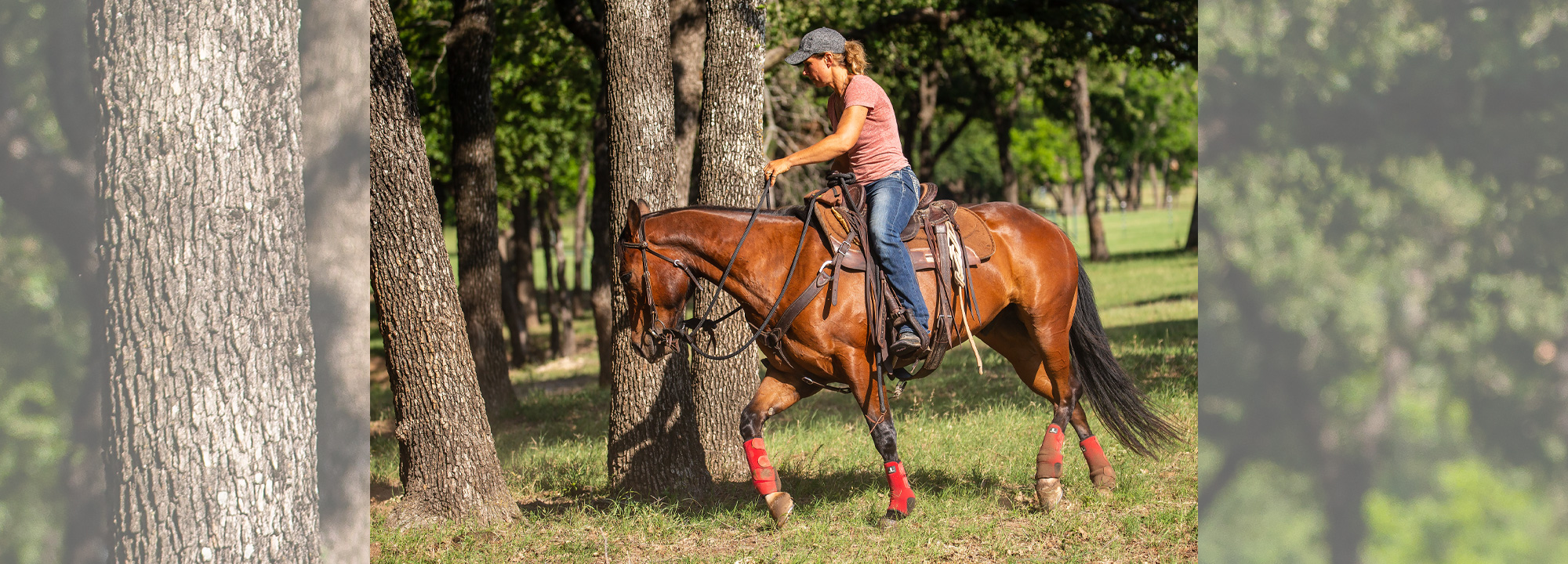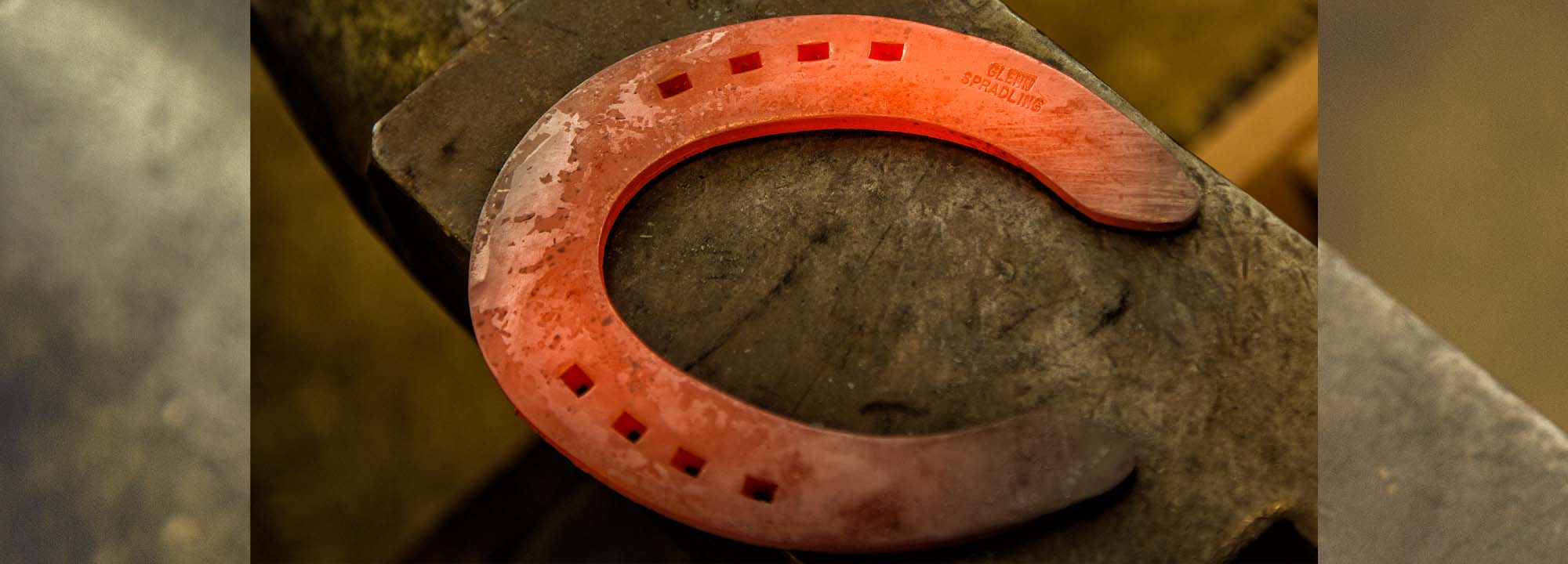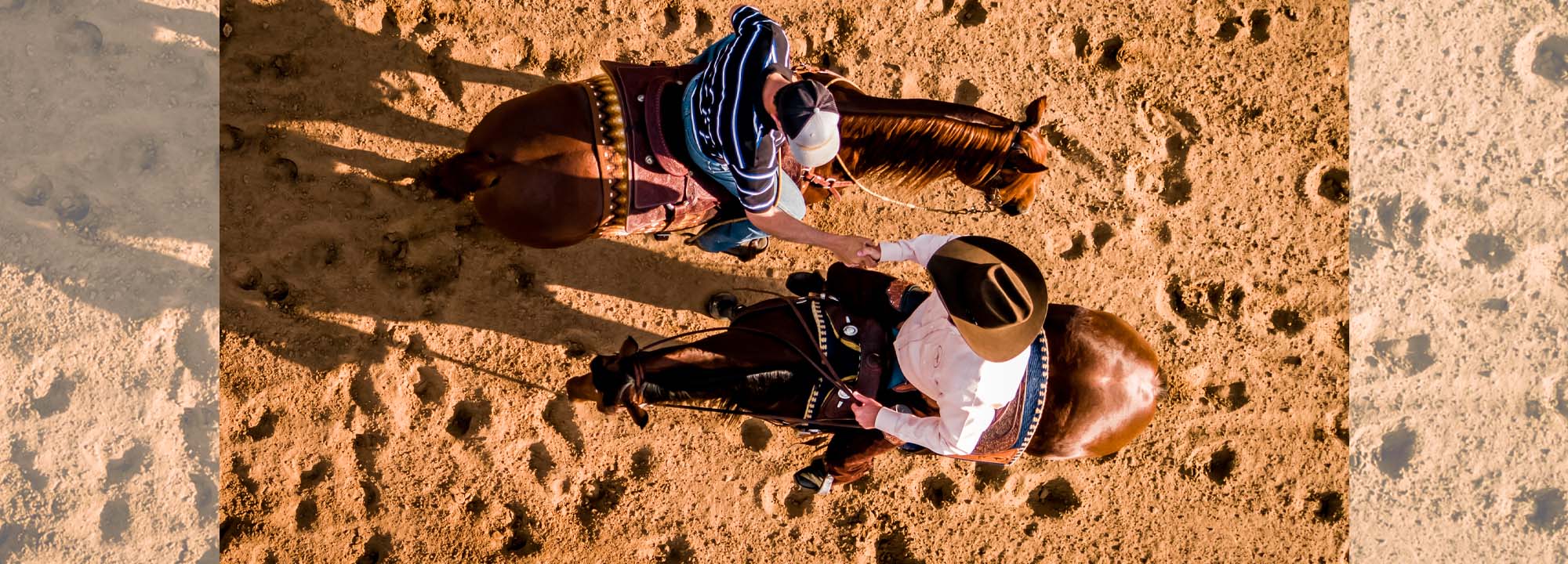When it comes to teaching an inexperienced horse how to be confident on the trail, it should come as no surprise that the rider plays a key role. A rider’s level of confidence and ability to be a good leader directly transfer to the horse.
If the rider is confident and an active leader, the horse will relax and look to them for direction. If the rider is nervous and jumpy and doesn’t give the horse any direction, he’ll mimic the behavior and become a nervous wreck.
Riders who teach their horses to be confident and look to them for direction share three similar traits. This week we’re going to talk about how being an active leader gives your horse confidence.
Active Leaders
They’re good leaders for their horses. That means that when they take their horses out on the trail, they give them a purpose and ride with focus. They give the horse little jobs to do – two-tracking down the trail, circling bushes, practicing transitions, etc. I like to think of it as giving the horses little puzzles to solve.
That’s the complete opposite of what a lot of people do. They go down the trail and wait for their horse to get tight and nervous and eventually spook. A rider who is being an active leader doesn’t give their horse a chance to spook because they keep his feet and mind engaged with them.
The bottom line is a lack of leadership makes the horse feel uncomfortable. Horses want a leader and naturally look for somebody worthy to follow. If you’re not willing to do the job, the horse will eventually step up to the plate and do it himself. When that happens, you have no control. Instead, your horse is in control of you, which puts you in a situation that can turn extremely dangerous.
As a general rule, because they’re prey animals, horses are piss poor decision makers. They are constantly on the lookout for danger because they know that if they spot a predator too late, they’re going to be his next meal. But, let’s face it, 99.9 percent of whatever your horse thinks is an immediate danger or will kill him is nothing to get worried about.
You can “trick” yourself into being a confident rider on the trail by going out with specific tasks to accomplish. Keeping your mind busy has the same effect as it does for keeping your horse’s mind busy. If you’re concentrating on what you’re asking the horse to do, you won’t have time to be worried about all the “what ifs.”
I use this approach all the time when helping a rider overcome fear. Say I’m working with someone who is scared to canter their horse. Instead of telling them how to sit properly in the saddle and yelling at them to ignore their fear, I give them jobs to do. I force them to concentrate on a task rather than their fear. Before they know it, they’re cantering their horse without an issue.





